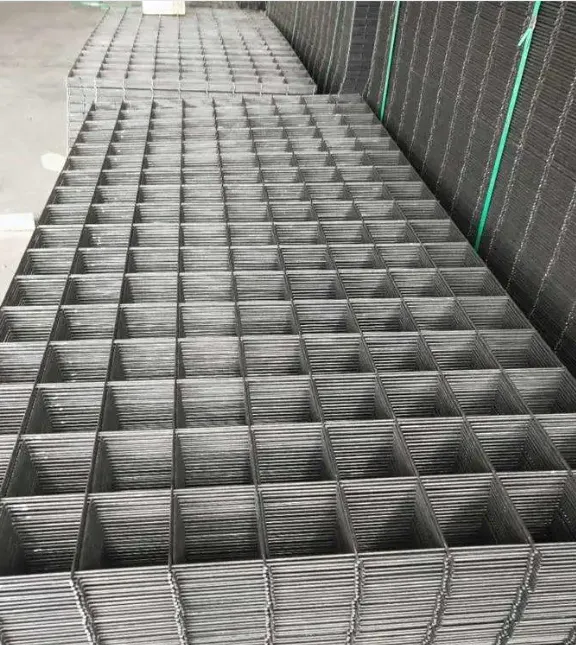The Versatility and Applications of Architectural Metal Grating
Architectural metal grating is an ingenious product that finds its place in both functional and aesthetic applications across various architectural projects. It is composed of a sturdy, open framework, typically made from materials such as stainless steel, aluminum, or carbon steel. The distinctive design and durability of metal grating have made it a popular choice among architects and designers, allowing them to merge utility with impressive visual appeal.
Types of Architectural Metal Grating
Metal grating comes in a variety of types, each catering to specific needs. The most common types include
1. Bar Grating One of the most widely used forms, it consists of load-bearing bars that are spaced apart to allow for drainage and ventilation. Bar grating is often utilized for walkways, platforms, and industrial applications.
2. Expanded Metal Grating This type is made by cutting and stretching a solid metal sheet, creating a mesh-like structure. It provides strength while being lightweight, making it ideal for security screens, fencing, and decorative elements.
3. Perforated Grating Featuring a series of holes, perforated grating allows for airflow and light penetration, making it suitable for ceilings, walls, or applications requiring sound attenuation.
Each of these types not only serves a practical purpose but also contributes a significant design element to a construction project.
Benefits of Using Metal Grating
architectural metal grating

One of the most significant advantages of architectural metal grating is its durability. It is resistant to corrosion, weather changes, and heavy loads, making it ideal for outdoor applications and in environments exposed to harsh conditions. Additionally, metal grating is fire resistant, adding an essential safety component to any structure.
Moreover, metal grating allows for efficient drainage and ventilation, which is crucial in preventing water accumulation and maintaining appropriate temperature levels inside buildings. This aspect also plays a role in enhancing the longevity of structural components by minimizing moisture-related damage.
From an aesthetic standpoint, architectural metal grating is versatile. It can be custom-fabricated to suit various design motifs, colors, and textures, enabling architects to create visually appealing environments. Metal grating can be incorporated into staircases, balconies, railings, and facades, adding a modern touch to both urban and rustic designs.
Applications in Architecture
Architectural metal grating has found applications in myriad sectors. In commercial settings, it is often used in flooring, walkways, and parking garages, where both safety and design are paramount. In industrial environments, its strength makes it an ideal choice for platforms, machinery guards, and catwalks.
Public spaces, such as parks and recreational areas, benefit from metal grating as well, where it can be employed for seating, fencing, and landscaping features. Additionally, in residential projects, metal grating can enhance outdoor living spaces with decorative screens, pergolas, and stylish railings that maintain safety without sacrificing style.
Sustainability and Future Trends
As the architectural world increasingly focuses on sustainability, metal grating is well-positioned as a suitable choice. The use of recycled materials and the longevity of metal products contribute to environmentally friendly practices in construction. Furthermore, innovations in metal finishing technologies can enhance resistance to corrosion and maintenance needs, making metal grating an even more attractive solution for future projects.
Moreover, as architects lean towards creating open, airy spaces that invite natural light and airflow, the role of similar materials will likely expand. The integration of metal grating in smart architectural designs—such as living walls and green roofs—could lead to a new era of functional aesthetics in urban environments.
In conclusion, architectural metal grating is not merely a practical element in construction; it is a multifaceted design feature that combines utility with elegance. Its diverse applications, inherent strength, and potential for customization make it a favored choice among designers and architects, ensuring its place in the future of innovative architecture.
-
Why Galvanized Trench Cover Steel Grating Resists Corrosion
NewsJul.10,2025
-
The Versatility and Strength of Stainless Expanded Metal Mesh
NewsJul.10,2025
-
Load Calculations in Steel Grating Platforms
NewsJul.10,2025
-
Keeping Pets and Kids Safe with Chicken Wire Deck Railing
NewsJul.10,2025
-
Hole Diameter and Pitch for Round Perforated Metal Sheets
NewsJul.10,2025
-
Aluminium Diamond Mesh in Modern Architecture
NewsJul.10,2025
Subscribe now!
Stay up to date with the latest on Fry Steeland industry news.

